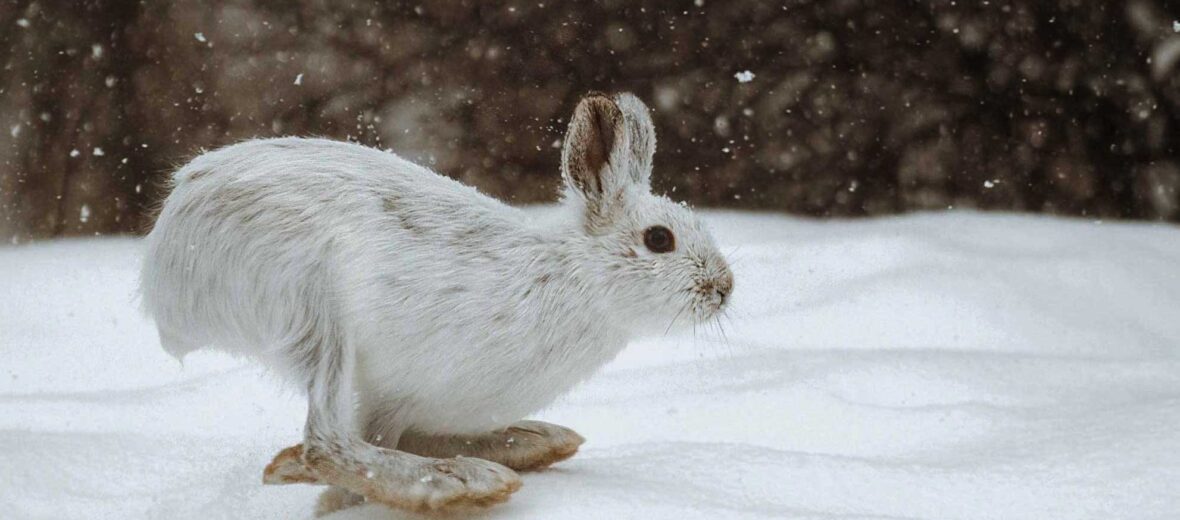
From their beautiful white winter coats, to their ginormous hind feet, the snowshoe hare is a cool critter indeed. It’s feet may look ridiculously large, but they are what helps them survive in the harsh environment in which they live. Hares are larger than rabbits and tend to live above ground, unlike rabbits, they don’t typically use burrows. Even though they have been hunted for their fur, for centuries, they are listed as Least Concern by the IUCN, due to their stable numbers.
First the Stats…
Scientific name: Lepus americanus
Weight: Up to 3.5 lbs.
Length: Up to 17 inches
Lifespan: Up to 5 years
Now on to the Facts!
1.) Snowshoe hares can be found throughout the boreal forests and montane forests in the United States and Canada, all the way north to the Arctic Ocean.
2.) Not only are they perfectly adept to move about in the snow, but they’re also good swimmers too.
3.) They are preyed on by the Canadian lynx, bobcats, fishers, weasels, martens, coyotes, domestic dogs, domestic cats, cougars, owls, hawks, goshawks, golden eagles, crows, ravens, foxes, and black bears. It’s a rough life.
4.) These cuddly and cute critters eat clovers, grasses, forbs, berries, leaves, moss, lichens, twigs, and shoots. This makes them strict herbivores (eat plant matter).
5.) In the summer their coats turn a reddish brown and in winter, they turn a brilliant white, with black ear tips.
But wait, there’s more on the snowshoe hare!
6.) Unlike rabbits, hares are born with a nice fur coat and eyes open; ready to take on the world at birth.
7.) The bottoms of their feet are covered with stiff bristles that act as, well, snowshoes. They are also insulated with thick fur to shield them from the cold.
Did you know…?
These agile critters can run up to 27 mph and can jump up to 10 feet!
8.) Recent studies suggest that cyclic fluctuations of snowshoe hare populations most likely result from a relation between predation and food supply. So, some years there will be more hares, and other years there will be less. Based on food and how much they’re preyed on.
9.) Snowshoe hares are nocturnal (active at night) and crepuscular (active at dawn and dusk), based on their needs.
10.) Females birth between 3 – 7 leverets (young hares) each time they breed.
But wait, there’s still more on the snowshoe hare!
11.) Since they are active year round, there is no primary breeding season. They breed year round. Hence their stable numbers.
12.) The snowshoe hare can actually become pregnant, while already pregnant, due to their twin uteri.
13.) Like all hares and rabbits, the snowshoe hare has a fused pelvis and therefor can’t walk. They must hop, everywhere they roam.
14.) Their teeth, like all rodents, never stop growing. So they have to constantly gnaw on tough substances to ware down their teeth and keep them honed and in check.
Now a Short Snowshoe Hare Video!
Also, check out the Critter Science YouTube channel. Videos added frequently!
Want to suggest a critter for me to write about? Let me know here.



